Last updated on March 31, 2024
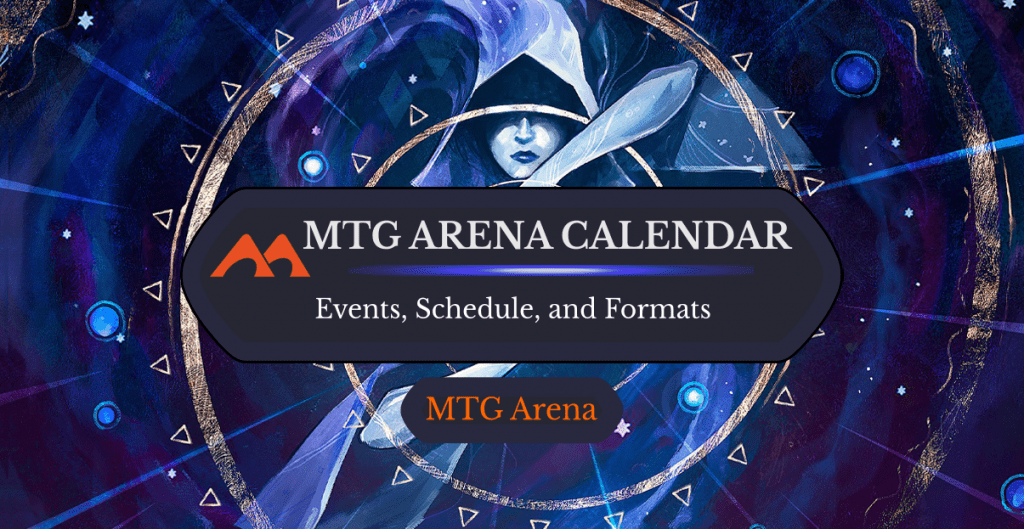
Time Warp (Strixhaven Mystical Archive) | Illustration by Dominik Mayer
Though more formats often equal more fun, MTG Arena, unfortunately, launches new events and features so quickly that it can be confusing to keep track of all the things going on. Don’t worry though, we’re here for you! If you bookmark this page and check back every once in a while, we’ll keep you updated on events, formats, and rotation so that you can plan what to do ahead of time.
There are lots of events to take part in in MTGA and they come up with new ones pretty often. While WotC has a calendar on its website with events, not everything is there and the general consensus is that it’s not the easiest or the most user-friendly experience. That’s why we’ve compiled that information here in one easy spot, that’s hopefully a lot easier to digest!
Current Events (April 2024)
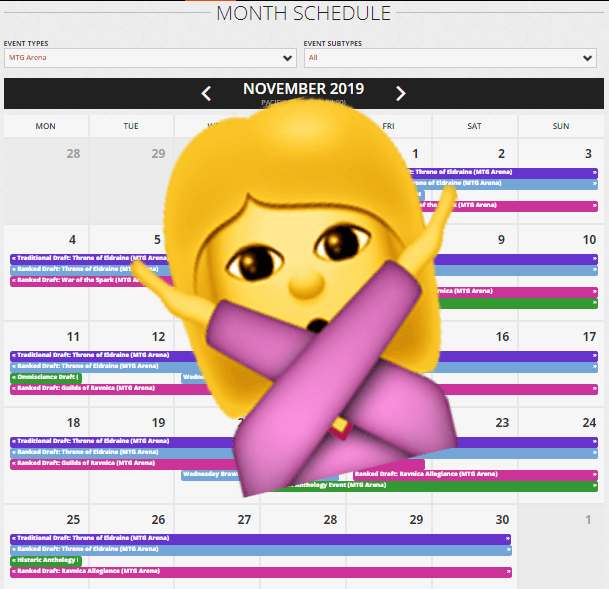
Event tables are updated on Fridays
| Title | Event Dates | Entry Fee | Max Wins / Losses | Max Rewards | Match Structure |
|---|---|---|---|---|---|
| Sealed: Outlaws of Thunder Junction | April 17, 2024 | 2,000 gems | 7 / 3 | 2,200 gems & 3 packs | BO1 |
| Traditional Sealed: Outlaws of Thunder Junction | April 17, 2024 | 2,000 gems | 4 / 2 | 2,200 gems & 3 packs | BO3 |
| Premier Draft: Outlaws of Thunder Junction | April 17, 2024 | 1,500 gems or 10,000 gold | 7 / 3 | 2,200 gems & 6 packs | BO1 |
| Traditional Draft: Outlaws of Thunder Junction | April 17, 2024 | 1,500 gems or 10,000 gold | 3 / 0 | 2,500 gems, 6 packs, and 2 play in points | BO3 |
| Quick Draft: Outlaws of Thunder Junction | Apr. 26 to May 7, 2024 | 750 gems or 5,000 gold | 7 / 3 | All the cards you picked + 950 gems + 2 packs | BO1 |
Evergreen Events
| Title | Entry Fee | Max Wins / Losses | Max Rewards | Match Structure |
|---|---|---|---|---|
| Standard Event | 2,500 gold or 375 gems | 7 / 3 | 500 gems, 3 packs, and 1 Play-In Point | BO1 |
| Traditional Standard Event | 5,000 gold or 750 gems | 5 total matches, regardless of record | 1,000 gems, 3 packs, and 4 Play-In Points | BO3 |
| Historic Event | 2,500 gold or 375 gems | 7 / 3 | 500 gems, 3 packs, and 1 Play-In Point | BO1 |
| Traditional Historic Event | 5,000 gold or 750 gems | 5 total matches, regardless of record | 1,000 gems, 3 packs, and 4 Play-In Points | BO3 |
| Brawl | Free | Unlimited | N/A | BO1 |
| Historic Brawl | Free | Unlimited | N/A | BO1 |
| Historic Ranked | Free | Unlimited | N/A | BO1 |
| Traditional Historic Ranked | Free | Unlimited | N/A | BO3 |
| Alchemy | Free | Unlimited | N/A | BO1 |
| Traditional Alchemy | Free | Unlimited | N/A | BO3 |
| Alchemy Ranked | Free | Unlimited | N/A | BO1 |
| Traditional Alchemy Ranked | Free | Unlimited | N/A | BO3 |
| FNM @ Home (every Friday) | Free | 2 wins, losses not counted | 2 rare ICRs | BO1 |
| Midweek Magic (every Tues. to Thurs.) | Free | Unlimited | 2 rare ICRs | BO1 |
| Alchemy Event | 2,500 gold or 375 gems | 7 / 3 | 500 gems, 3 packs, and 1 Play-In Point | BO1 |
| Explorer Event | 2,500 gold or 375 gems | 7 / 3 | 500 gems, 3 packs, and 1 Play-In Point | BO1 |
| Traditional Alchemy Event | 5,000 gold or 750 gems | 5 total matches, regardless of record | 1,000 gems, 3 packs, and 4 Play-In Points | BO3 |
| Quick Draft | 5,000 gold or 950 gems | 7 / 3 | 950 gems + 2 packs | BO1 |
| Traditional Draft | 10,000 gold or 1,500 gems | 3 matches regardless of wins/losses | 2,500 gems, 6 packs, and 2 Play-In Points | BO3 |
| Premier Draft | 10,000 gold or 1,500 gems | 7 / 3 | 2,200 gems, 6 packs | BO1 |
Upcoming Events (April 2024)
| Title | Event Dates | Entry Fee | Max Wins / Losses | Max Rewards | Match Structure |
|---|---|---|---|---|---|
| Midweek Magic: On the Edge | Apr. 30 to May 2, 2024 | Free | Unlimited | 2 rare ICRs | BO1 |
| Arena Open: Outlaws of Thunder Junction Day 1 | May 4 to May. 5, 2024 | 5,000 gems or 25,000 gold | 7 / 3 or 4 / 1 | Day 2 Invite + (5,000 gems for BO1 or 6,000 gems for BO3) | BO1 or BO3 |
| Arena Open: Outlaws of Thunder Junction Day 2 Draft One | May 4 to May. 5, 2024 | Invitation Token | 4 / 2 | Draft Two Invitation Token | BO3 |
| Arena Open: Outlaws of Thunder Junction Day 2 Draft Two | May 4 to May. 5, 2024 | Invitation Token | 4 / 2 | Feb. Qualifier Weekend Invitation | BO3 |
Past Events
| Title | Event Dates | Entry Fee | Max Wins / Losses | Max Rewards | Match Structure |
|---|---|---|---|---|---|
| Quick Draft: March of the Machine | May 26 to June 6, 2023 | 5,000 gold or 750 gems | 7 / 3 | All the cards you picked + 950 gems + 2 packs | BO1 |
| Midweek Magic: Historic Pauper | May 7 to Jun 9, 2023 | Free | Unlimited | 2 rare ICRs | BO1 |
| Quick Draft: The Brothers' War | June 9 to June 16, 2023 | 5,000 gold or 750 gems | 7 / 3 | All the cards you picked + 950 gems + 2 packs | BO1 |
| Premier Draft: Innistrad: Crimson Vow | June 3 to June 11, 2023 | 1,500 gems or 10,000 gold | 7 / 3 | 2,200 gems & 6 packs | BO1 |
| Ranked Draft: War of the Spark Practice | Tier Lists | Nov. 1 to 8 | 5,000 gold or 750 gems | 7 / 3 | All the cards you picked + 950 gems + 2 packs | BO1 |
| Traditional Draft: Throne of Eldraine Practice | Tier Lists | Nov. 1 to Jan. 20 | 1,500 gems | 5 / 2 | All the cards you picked + 2,100 gems + 6 packs | BO3 |
| Ranked Draft: Throne of Eldraine Practice | Tier Lists | Nov. 1 to Jan. 31 | 5,000 gold or 750 gems | 7 / 3 | All the cards you picked + 950 gems + 2 packs | BO1 |
| Omniscience Draft Practice | Tier Lists | Nov. 7 to 11 | 5,000 gold or 750 gems | 7 / 3 | 950 gems + 2 packs | BO1 |
| Ranked Draft: Guilds of Ravnica Practice | Tier Lists | Nov. 8 to 22 | 5,000 gold or 750 gems | 7 / 3 | All the cards you picked + 950 gems + 2 packs | BO1 |
| Historic Anthology Event | Nov. 21 to 25 | 1,000 gold or 200 gems | 5 wins, losses not counted | 1 card style per win | BO1 |
| Ranked Draft: Ravnica Allegiance Practice | Tier Lists | Nov. 22 to Dec. 6 | 5,000 gold or 750 gems | 7 / 3 | All the cards you picked + 950 gems + 2 pack | BO1 |
| Ranked Draft: Core Set 2020 Practice | Tier Lists | Dec. 6 to 20 | 5,000 gold or 750 gems | 7 / 3 | All the cards you picked + 950 gems + 2 packs | BO1 |
| Brawlidays (Brawl event) | Dec. 12 to Jan. 16 | 10,000 gold or 2,000 gems | Unlimited | Rhys the Redeemed after 1 win | BO1 |
| Ranked Draft: War of the Spark Practice | Tier Lists | Dec. 20 to Jan. 3 | 5,000 gold or 750 gems | 7 / 3 | All the cards you picked + 950 gems + 2 packs | BO1 |
| Traditional Draft: Theros Beyond Death Practice | Tier Lists | Jan. 20 to Apr. 16 | 1,500 gems | 5 / 2 | All the cards you picked + 2,100 gems + 6 packs | BO3 |
| Historic Artisan | Dec. 20 to 30 | 2,500 gold or 500 gems | 5 wins, losses not counted | Card styles for each win: Wildgrowth Walker, Guttersnipe, Cast Down, Curious Obsession, Militia Bugler | BO1 |
| Standard Shakeup | Dec. 30 to Jan. 6 | 2,500 gold or 500 gems | 5 wins, losses not counted | 3,000 XP and card styles for Flux Channeler and Escape to the Wilds | BO1 |
| Ranked Draft: Dominaria Practice | Tier Lists | Jan. 3 to 16 | 5,000 gold or 750 gems | 7 / 3 | All the cards you picked + 950 gems + 2 packs | BO1 |
| Planeswalker Momir | Jan. 10 to 16 | 2,500 gold or 500 gems | No limit | 3,000 XP | BO1 |
| Historic Challenge | Jan. 11 to 13 | 10,000 gold or 2,000 gems | 8 / 3 | 15,000 gold, 40 Historic booster packs, Treasure Hunt sleeve, and Gaea's Cradle sleeve | BO3 |
| Premier Draft: Magic 30: Mixed-Up Premier Draft | Aug 3 to Aug 14, 202 | 1,500 gems or 10,000 gold | 7 / 3 | 2,200 gems & 6 packs | BO1 |
| Quick Draft: Dominaria United | Aug 1 to Aug 15, 2023 | 5,000 gold or 750 gems | 7 / 3 | All the cards you picked + 950 gems + 2 packs | BO1 |
| Midweek Magic: Slow Start | Aug 8 to Aug 10, 2023 | Free | Unlimited | 2 rare ICRs | BO1 |
| Premier Draft Throne of Eldraine | Aug 14 to Aug 21 | 1,500 gems or 10,000 gold | 7 / 3 | All the cards you picked + 2,200 gems + 6 packs | BO1 |
| Quick Draft: The Lord of the Rings: Tales of Middle-earth™ | Aug 15 to Aug 29, 2023 | 5,000 gold or 750 gems | 7 / 3 | All the cards you picked + 950 gems + 2 packs | BO1 |
| Midweek Magic: Momir | Aug 29 to Aug 31, 2023 | Free | Unlimited | 2 rare ICRs | BO1 |
| Sealed: The Lord of the Rings: Tales of Middle-earth | June 20, 2023 | 2,000 gems | 7 / 3 | 2,200 gems & 3 packs | BO1 |
| Traditional Sealed: The Lord of the Rings: Tales of Middle-earth | June 20, 2023 | 2,000 gems | 4 / 2 | 2,200 gems & 3 packs | BO3 |
| Premier Draft: The Lord of the Rings: Tales of Middle-earth | June 20, 2023 | 1,500 gems or 10,000 gold | 7 / 3 | 2,200 gems & 6 packs | BO1 |
| Traditional Draft: The Lord of the Rings: Tales of Middle-earth | June 20, 2023 | 1,500 gems or 10,000 gold | 3 / 0 | 2,500 gems, 6 packs, and 2 play in points | BO3 |
| Midweek Magic: Alchemy | Sep. 5 to Sep. 7 2023 | Free | Unlimited | 2 rare ICRs | BO1 |
| Quick Draft: March of the Machine | Aug 29 to Sep 15, 2023 | 5,000 gold or 750 gems | 7 / 3 | All the cards you picked + 950 gems + 2 packs | BO1 |
| Midweek Magic: Wilds of Eldraine Constructed | Sep. 12 to Sep. 14 2023 | Free | Unlimited | 2 rare ICRs | BO1 |
| Midweek Magic: Explorer | Sep. 19 to Sep. 21 2023 | Free | Unlimited | 2 rare ICRs | BO1 |
| Quick Draft: Wilds of Eldraine | Sep. 15 to Sep 26, 2023 | 5,000 gold or 750 gems | 7 / 3 | All the cards you picked + 950 gems + 2 packs | BO1 |
| Midweek Magic: The Brothers' War Bot Draft | Sep. 26 to Sep. 28 2023 | Free | Unlimited | 2 rare ICRs | BO1 |
| Midweek Magic: On the Edge | Oct. 4 to Oct. 6 2023 | Free | Unlimited | 2 rare ICRs | BO1 |
| Quick Draft: The Brothers' War | September 26 to Oct. 10, 2023 | 5,000 gold or 750 gems | 7 / 3 | All the cards you picked + 950 gems + 2 packs | BO1 |
| Gift Bag Historic | Oct. 6 to Oct. 10, 2023 | 2,500 gold or 500 gems | Unlimited | Card Styles | BO1 |
| Midweek Magic: Into the Future | Oct. 10 to Oct. 12 2023 | Free | Unlimited | 2 rare ICRs | BO1 |
| Midweek Wilds of Eldraine Phantom Sealed | Oct. 17 to Oct. 19 2023 | Free | Unlimited | 2 rare ICRs | BO1 |
| Quick Draft: Wilds of Eldraine | Oct. 10 to Oct. 24, 2023 | 5,000 gold or 750 gems | 7 / 3 | All the cards you picked + 950 gems + 2 packs | BO1 |
| Midweek Alchemy Ladder Deck Showcase | Oct. 24 to Oct. 26 2023 | Free | Unlimited | 2 rare ICRs | BO1 |
| Arena Open: Wilds of Eldraine Limited (BO1) | Oct. 28 to Oct. 29, 2023 | 25,000 gold or 5,000 gems | 7/3 | 5,000 gems Day 2 invitation token | BO1 |
| Arena Open: Wilds of Eldraine Limited (BO3) | Oct. 28 to Oct. 29, 2023 | 25,000 gold or 5,000 gems | 4/1 | 6,000 gems Day 2 invitation token | BO3 |
| Midweek Innistrad: Crimson Vow vs. Innistrad: Midnight Hunt Phantom Sealed | Oct. 31 to Nov. 2 2023 | Free | Unlimited | 2 rare ICRs | BO1 |
| Premier Draft: Shadows over Innistrad Remastered: Fatal Flashback | Oct. 17 to Oct. 31, 2023 | 1,500 gems or 10,000 gold | 7 / 3 | 2,200 gems & 6 packs | BO1 |
| Traditional Draft: Shadows over Innistrad Remastered: Fatal Flashback Sealed | Oct. 17 to Oct. 31, 2023 | 1,500 gems or 10,000 gold | 3 / 0 | 2,500 gems, 6 packs, and 2 play in points | BO3 |
| Midweek Magic: Brawl ShowcaseSealed | Nov. 7 to Nov. 9 2023 | Free | Unlimited | 2 rare ICRs | BO1 |
| Quick Draft: Phyrexia: All Will Be One | Oct. 24 to Nov. 7, 2023 | 5,000 gold or 750 gems | 7 / 3 | All the cards you picked + 950 gems + 2 packs | BO1 |
| Sealed: Wilds of Eldraine | September 5, 2023 | 2,000 gems | 7 / 3 | 2,200 gems & 3 packs | BO1 |
| Traditional Sealed: Wilds of Eldraine | September 5, 2023 | 2,000 gems | 4 / 2 | 2,200 gems & 3 packs | BO3 |
| Premier Draft: Wilds of Eldraine | September 5, 2023 | 1,500 gems or 10,000 gold | 7 / 3 | 2,200 gems & 6 packs | BO1 |
| Traditional Draft: Wilds of Eldraine | September 5, 2023 | 1,500 gems or 10,000 gold | 3 / 0 | 2,500 gems, 6 packs, and 2 play in points | BO3 |
| Midweek Magic: Alchemy | Nov. 14 to Nov. 16 2023 | Free | Unlimited | 2 rare ICRs | BO1 |
| Quick Draft: Dominaria United | Nov. 7 to Nov.. 23, 2023 | 5,000 gold or 750 gems | 7 / 3 | All the cards you picked + 950 gems + 2 packs | BO1 |
| Midweek Magic: The Lost Caverns of Ixalan Constructed | Nov. 21 to Nov. 23 2023 | Free | Unlimited | 2 rare ICRs | BO1 |
| Midweek Magic: On the Edge | Nov. 28 to Nov. 30 2023 | Free | Unlimited | 2 rare ICRs | BO1 |
| Quick Draft: The Lost Caverns of Ixalan | Nov. 23 to Dec.. 5, 2023 | 5,000 gold or 750 gems | 7 / 3 | All the cards you picked + 950 gems + 2 packs | BO1 |
| Festival: The Immortal Sun Historic Event | Nov. 29 to Dec. 5, 2023 | 2,500 gold or 500 gems | 5 / 0 | Card Style | BO1 |
| Midweek Magic: Alchemy Cascade | Dec. 5 to Dec. 7 2023 | Free | Unlimited | 2 rare ICRs | BO1 |
| Midweek Magic: Introducing Timeless! | Dec. 12 to Dec. 14 2023 | Free | Unlimited | 2 rare ICRs | BO1 |
| Arena Open: Khans of Tarkir Sealed (BO1) | Dec. 16 to Dec. 17, 2023 | 25,000 gold or 5,000 gems | 7/3 | 5,000 gems Day 2 invitation token | BO1 |
| Arena Open: Khans of Tarkir Sealed (BO3) | Dec. 16 to Dec. 17, 2023 | 25,000 gold or 5,000 gems | 4/1 | 6,000 gems Day 2 invitation token | BO3 |
| Quick Draft: Wilds of Eldraine | Dec.. 5 to Dec. 22, 2023 | 5,000 gold or 750 gems | 7 / 3 | All the cards you picked + 950 gems + 2 packs | BO1 |
| Midweek Magic: Khans of Tarkir Constructed | Dec. 26 to Dec. 28, 2023 | Free | Unlimited | 2 rare ICRs | BO1 |
| Quick Draft: Khans of Tarkir | Dec. 22 to Jan. 2, 2023 | 5,000 gold or 750 gems | 7 / 3 | All the cards you picked + 950 gems + 2 packs | BO1 |
| Midweek Magic: Momir | Jan. 2 to Jan. 4, 2023 | Free | Unlimited | 2 rare ICRs | BO1 |
| Midweek Magic: The Lost Caverns of Ixalan Phantom Sealed | Jan. 9 to Jan. 11, 2023 | Free | Unlimited | 2 rare ICRs | BO1 |
| Premier Draft: Khans of Tarkir | Dec. 12 to Jan. 16, 2024 | 1,500 gems or 10,000 gold | 7 / 3 | 2,200 gems & 6 packs | BO1 |
| Midweek Magic: Historic Pauper | Jan. 16 to Jan. 18, 2024 | Free | Unlimited | 2 rare ICRs | BO1 |
| Quick Draft: The Lost Caverns of Ixalan | Jan. 2 to Jan. 16, 2024 | 750 gems or 5,000 gold | 7 / 3 | All the cards you picked + 950 gems + 2 packs | BO1 |
| Arena Open: The Lost Caverns of Ixalan Day 1 | Jan. 20, 2024 | 5,000 gems or 25,000 gold | 7 / 3 or 4 / 1 | Day 2 Invite + (5,000 gems for BO1 or 6,000 gems for BO3) | BO1 or BO3 |
| Arena Open: The Lost Caverns of Ixalan Day 2 Draft One | Jan. 21, 2024 | Invitation Token | 4 / 2 | Draft Two Invitation Token | BO3 |
| Arena Open: The Lost Caverns of Ixalan Day 2 Draft Two | Jan. 21, 2024 | Invitation Token | 4 / 2 | Feb. Qualifier Weekend Invitation | BO3 |
| Midweek Magic: Brawl | Jan. 23 to Jan. 25, 2024 | Free | Unlimited | 2 rare ICRs | BO1 |
| Quick Draft: The Brothers' War | Jan. 16 to Jan. 30, 2024 | 750 gems or 5,000 gold | 7 / 3 | All the cards you picked + 950 gems + 2 packs | BO1 |
| Midweek Magic: Phyrexia: All Will Be One Phantom Bot Draft | Jan. 30 to Feb. 1, 2024 | Free | Unlimited | 2 rare ICRs | BO1 |
| Arena Cube Draft | Jan. 23 to Feb. 5, 2024 | 600 gems or 4,000 gold | 7 / 3 | 6,000 gold + 3 cards | BO1 |
| Midweek Magic: Jump Into Murders at Karlov Manor | Feb. 6 to Feb. 8, 2024 | Free | Unlimited | 2 rare ICRs | BO1 |
| Quick Draft: March of the Machine | Jan. 30 to Feb. 16, 2024 | 750 gems or 5,000 gold | 7 / 3 | All the cards you picked + 950 gems + 2 packs | BO1 |
| Midweek Magic: Murders at Karlov Manor Constructed | Feb. 13 to Feb. 15, 2024 | Free | Unlimited | 2 rare ICRs | BO1 |
| Sealed: Lost Caverns of Ixalan | November 14, 2023 | 2,000 gems | 7 / 3 | 2,200 gems & 3 packs | BO1 |
| Traditional Sealed: Lost Caverns of Ixalan | November 14, 2023 | 2,000 gems | 4 / 2 | 2,200 gems & 3 packs | BO3 |
| Premier Draft: Lost Caverns of Ixalan | November 14, 2023 | 1,500 gems or 10,000 gold | 7 / 3 | 2,200 gems & 6 packs | BO1 |
| Traditional Draft: Lost Caverns of Ixalan | November 14, 2023 | 1,500 gems or 10,000 gold | 3 / 0 | 2,500 gems, 6 packs, and 2 play in points | BO3 |
| Midweek Magic: On the Edge | Feb. 20 to Feb. 22, 2024 | Free | Unlimited | 2 rare ICRs | BO1 |
| Quick Draft: Murders at Karlov Manor | Feb. 16 to Feb. 27, 2024 | 750 gems or 5,000 gold | 7 / 3 | All the cards you picked + 950 gems + 2 packs | BO1 |
| Midweek Magic: Momir | Feb. 27 to Feb. 29, 2024 | Free | Unlimited | 2 rare ICRs | BO1 |
| Midweek Magic: Into the Future | Mar. 5 to Mar. 7, 2024 | Free | Unlimited | 2 rare ICRs | BO1 |
| Arena Open: Murders at Karlov Manor Day 1 | Mar. 2 to Mar. 3, 2024 | 5,000 gems or 25,000 gold | 7 / 3 or 4 / 1 | Day 2 Invite + (5,000 gems for BO1 or 6,000 gems for BO3) | BO1 or BO3 |
| Arena Open: Murders at Karlov Manor Day 2 Draft One | Mar. 2 to Mar. 3, 2024 | Invitation Token | 4 / 2 | Draft Two Invitation Token | BO3 |
| Arena Open: Murders at Karlov Manor Day 2 Draft Two | Mar. 2 to Mar. 3, 2024 | Invitation Token | 4 / 2 | Feb. Qualifier Weekend Invitation | BO3 |
| Quick Draft: Wilds of Eldraine | Feb. 27 to Mar. 12, 2024 | 750 gems or 5,000 gold | 7 / 3 | All the cards you picked + 950 gems + 2 packs | BO1 |
| Midweek Magic: Artisan Brawl | Mar. 12 to Mar. 15, 2024 | Free | Unlimited | 2 rare ICRs | BO1 |
| Midweek Magic: Murders at Karlov Manor Phantom Sealed | Mar. 19 to Mar. 22, 2024 | Free | Unlimited | 2 rare ICRs | BO1 |
| Quick Draft: Murders at Karlov Manor | Mar. 12 to Mar. 26, 2024 | 750 gems or 5,000 gold | 7 / 3 | All the cards you picked + 950 gems + 2 packs | BO1 |
| Premier Draft: War of the Spark | Mar. 19 to Mar. 26, 2024 | 1,500 gems or 10,000 gold | 7 / 3 | 2,200 gems & 6 packs | BO1 |
| Midweek Magic: Timeless Showcase | Mar. 26 to Mar. 29, 2024 | Free | Unlimited | 2 rare ICRs | BO1 |
| Midweek Magic: Omniscience Draft | Apr. 2 to Apr. 5, 2024 | Free | Unlimited | 2 rare ICRs | BO1 |
| Quick Draft: Phyrexia: All Will Be One | Mar. 26 to Apr. 9, 2024 | 750 gems or 5,000 gold | 7 / 3 | All the cards you picked + 950 gems + 2 packs | BO1 |
| Midweek Magic: Gladiator Community Spotlight | Apr. 9 to Apr. 11, 2024 | Free | Unlimited | 2 rare ICRs | BO1 |
| Sealed: Murders at Karlov Manor | February 6, 2024 | 2,000 gems | 7 / 3 | 2,200 gems & 3 packs | BO1 |
| Traditional Sealed: Murders at Karlov Manor | February 6, 2024 | 2,000 gems | 4 / 2 | 2,200 gems & 3 packs | BO3 |
| Premier Draft: Murders at Karlov Manor | February 6, 2024 | 1,500 gems or 10,000 gold | 7 / 3 | 2,200 gems & 6 packs | BO1 |
| Traditional Draft: Murders at Karlov Manor | February 6, 2024 | 1,500 gems or 10,000 gold | 3 / 0 | 2,500 gems, 6 packs, and 2 play in points | BO3 |
| Midweek Magic: Jump Into Outlaws of Thunder Junction | Apr. 16 to Apr. 18, 2024 | Free | Unlimited | 2 rare ICRs | BO1 |
| Quick Draft: The Lost Caverns of Ixalan | Apr. 9 to Apr. 26, 2024 | 750 gems or 5,000 gold | 7 / 3 | All the cards you picked + 950 gems + 2 packs | BO1 |
| Midweek Magic: Outlaws of Thunder Junction Constructed | Apr. 23 to Apr. 25, 2024 | Free | Unlimited | 2 rare ICRs | BO1 |
Choose Events Strategically
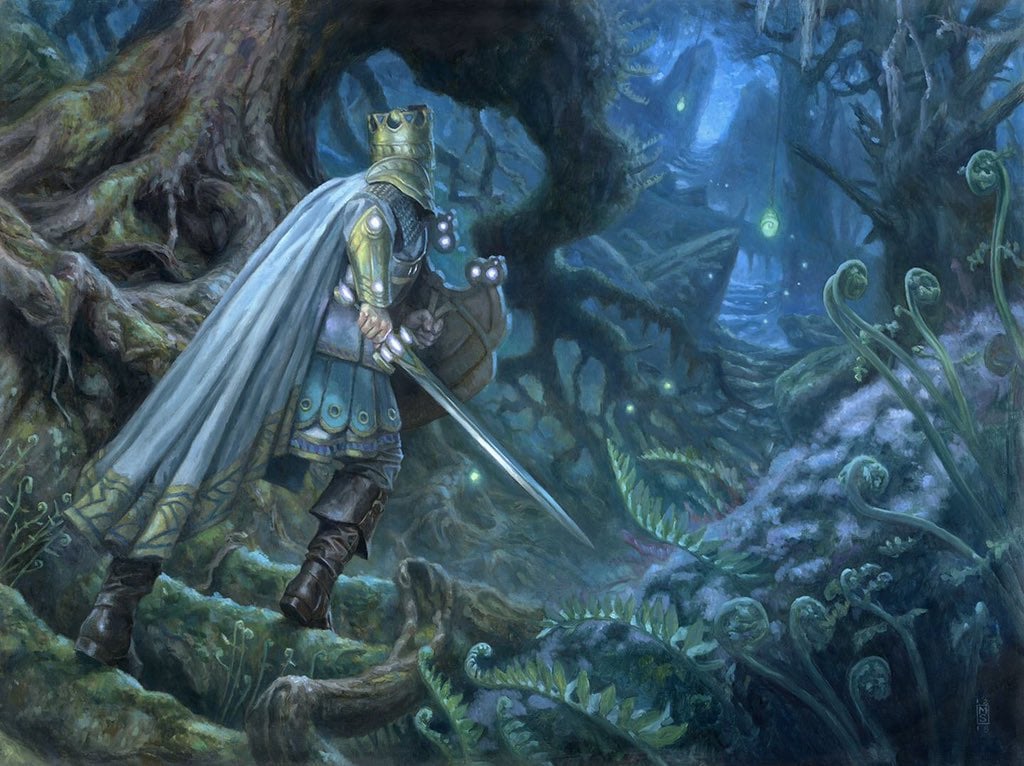
Once Upon a Time | Illustration by Matt Stewart
You might be asking yourself, “why bother?” Well, the reason is simple: unless you spend a lot of money, you’ll have to manage your gold carefully while playing different game modes. The cost of these events varies, but if we take the Quick Draft (formerly known as Ranked Draft, since April 2020) as an example, you’ll have to spend 5,000 gold to participate. For a casual player who won around 3 to 4 games every day, it would take about 3 to 4 days to save up 5,000 gold even if you got 750 gold quests all the time.
If you’re trying to climb the ranked ladder, it’s important to have cards that have synergy. The best way to do this is to join the right drafts that have the cards you need to add to your collection. It’s also wise to think ahead while building your decks because there’s something called “Standard rotation” that you should keep in mind.
This might sound like too much of a hassle, but you’ll have to manage your resources if you want to expand your collection. Granted, most of the events don’t cost that much. They’re usually around either 1,000 gold or 100 to 200 gems and if you can manage to get some wins, you’ll have the chance to add more cards to your collection.
You should also be aware of the match structure: traditional drafts are played in best-of-three (BO3) format, so you’ll have to spend a much longer time on those compared to ranked drafts which are best-of-one (BO1). Take a look at our ultimate guide to drafting for a more in-depth analysis.
What Are the Rewards for Participating in Events on the MTG Arena Schedule?
The rewards for each event vary but often include gold, gems, booster packs, cosmetics, and in some cases, individual card rewards or exclusive card styles. In an Arena Open, the prizes for Day 1 include gems and an invitation to the next event. The maximum reward in the second event of Arena Open Day 2, is $2,000 and a qualifier weekend invitation.
So take a look at what’s going on now and what’s coming up so that you can save up your gold and gems to participate.
Currently Available MTG Arena Formats
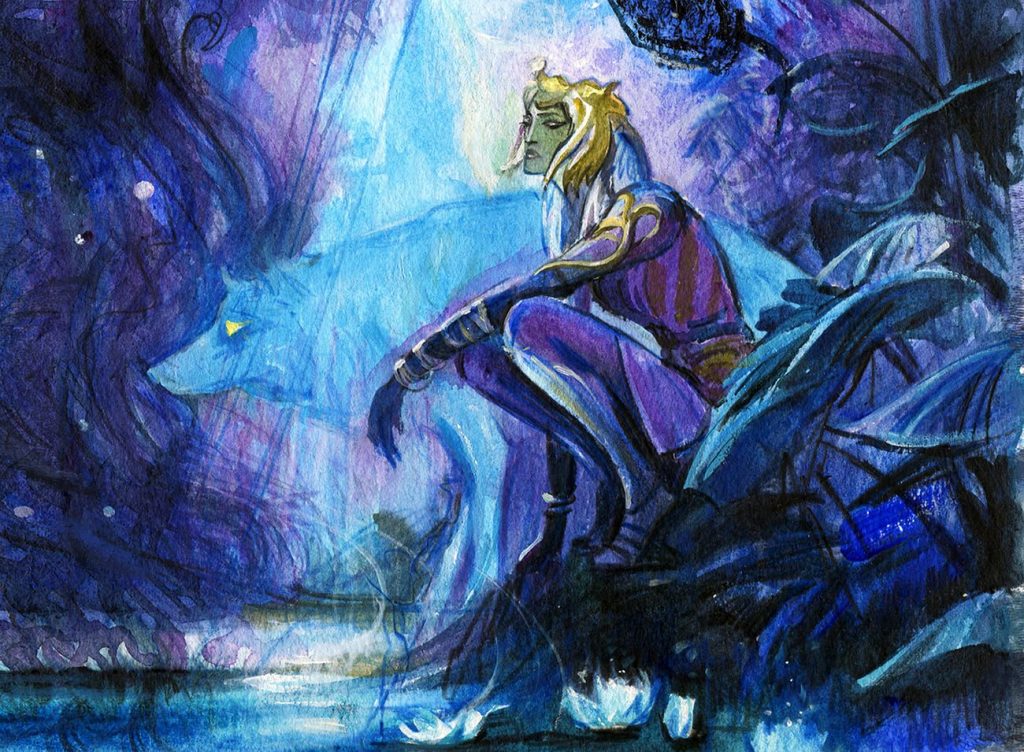
Timeless Witness (Showcase Frame) | Illustration by Deruchenko Alexander
We’ve also compiled all of the MTGA formats that are currently available in some form whether they're a consistently recurring event or an evergreen one. We've also included each format's cost, max wins/losses, max awards, and match structure associated with the format when it comes to events. If you’re a bit confused or just want some more info, jump over to the formats explained section for more details. For now, take a look:
| Format | Cost | Max Wins / Losses | Max Rewards | Match Structure |
|---|---|---|---|---|
| Premier Draft | 10,000 gold or 1,500 gems | 7 / 3 | All the cards you picked + 2,200 gems + 6 packs | BO1 |
| Quick Draft | 5,000 gold or 750 gems | 7 / 3 | All the cards you picked + 950 gems + 2 packs | BO1 |
| Traditional Draft | 10,000 gold or 1,500 gems | 3 matches regardless of wins/losses | All the cards you picked + 3,000 gems + 6 packs | BO3 |
| Cube Draft | 4,000 gold or 600 gems | 7/3 | 6,000 gold + 1 uncommon & 2 rare Historic ICRs | BO3 |
| Sealed | 2,000 gems | 7 / 3 | All the cards you picked + 2,200 gems + 3 packs | BO1 |
| Traditional Constructed | 1,000 gold or 190 gems | 5 / 2 | 2,100 gold + one uncommon or higher card + two rare or higher cards | BO3 |
| Constructed Event | 500 gold or 95 gems | 7 / 3 | 1,000 gold + one uncommon or higher card + two rare or higher cards | BO1 |
| Singleton | 250 gold or 50 gems | 7 / 3 | 1,000 gold + one uncommon + two rare or higher cards | BO1 |
| Omniscience Draft | 5,000 gold or 750 gems | 7 / 3 | 950 gems + 2 packs | BO1 |
| Competitive Metagame Challenge | 2,000 gold or 400 gems | 7 / 1 | 5,000 gold + 30 packs | BO3 |
| Brawl | N/A | Unlimited | N/A | BO1 |
Formats Explained
We all love playing MTG Arena, but every player wants to take things easy sometimes and try alternative game modes, especially after a series of long games. Since we’re still a long way away from custom games or lobbies for creating chaotic 4-player free-for-all mayhem (Commander, anyone?), we have to make do with the alternative events that occasionally appear on the main page.
What Are the Differences Between Constructed and Limited Events?
The difference is that for a constructed event you bring a deck that you've already built and in a limited event you'll be making your deck during the event. For Sealed and Draft (except phantom ones like Cube or Omniscience) the cards you have in your deck and sideboard are added to your collection.
Here are just some of the repeating game formats available right now:
Singleton
One of our all-time favorites, Singleton is a constructed format that forces you to build a deck without any duplicates (i.e., you can only use one copy of each card in your deck, except for basic lands). Since you can’t stack the same cards, you’ll need either a lot of synergy or a lot of brute force (i.e. power).
Draft
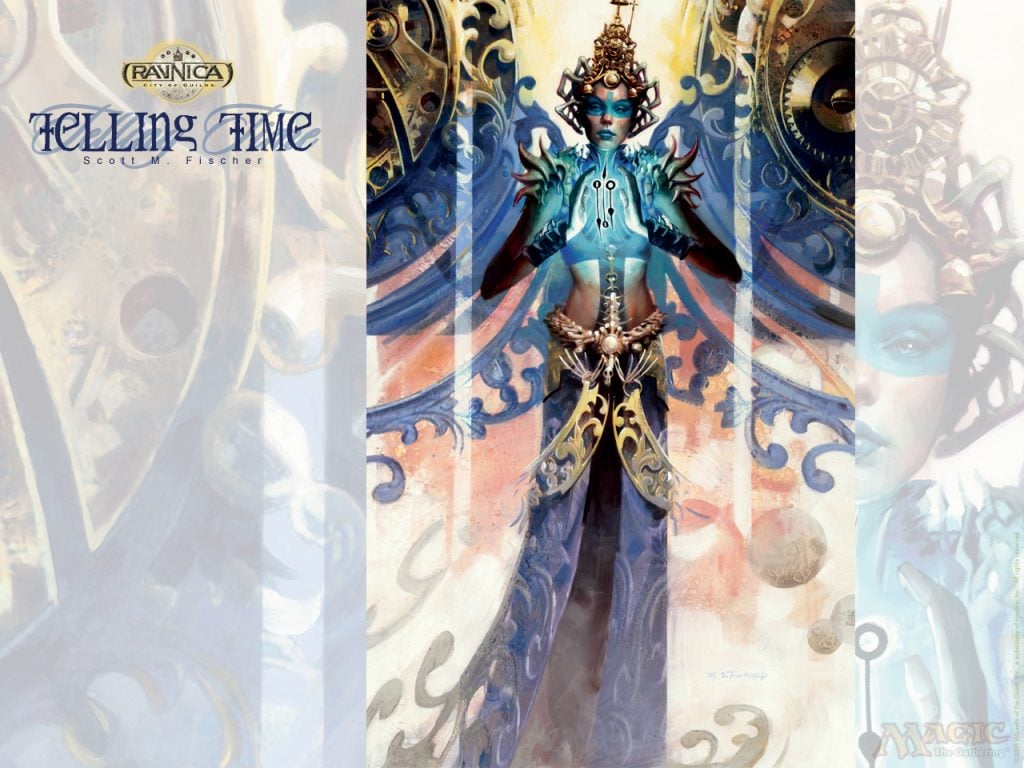
Telling Time | Illustration by Scott M. Fischer
The most important difference is whether you draft against players or bots.
People draft differently than bots, and if you've drafted in person, you may notice quite a difference in card picks. Pay attention to signals from your pod, but don't waste picks on cards you think the next player wants since you'll be playing against players from different pods when you're done.
There are some other note-worthy differences, so let's go through those for you.
Quick Draft
It's untimed, best of one, draft with bots and your matches are against other players, adjusted based on your tier ranking. The set rotates every two weeks. Entry fee, win/loss structure, and rewards are as small as they come for drafts that add to your collection.
Premier Draft
The entry fee and rewards for premier draft are much higher than quick draft. This is player vs. player in which you have a time limit to make each pick (it gets shorter with each card in the pack). You play BO1 either up to 7 wins or 3 losses and the card pool is typically the current set.
Traditional Draft
Traditional draft is BO3, of course, and you skip the player rankings. It's meant to emulate a draft at your LGS: you'll play a total of three matches, win or lose, and receive rewards based on how many matches you won.
Cube Draft
Cube draft works like traditional player vs. player draft, only the set of cards available to you is different, and the cards you pick won't be added to your collection. Instead of only being able to pick cards from a single set (such as a Khans of Tarkir draft), a cube draft may contain cards from several sets. The card quality will be high, yet the entry fee is low compared with non-phantom draft formats.
Omniscience
In this mode, you’ll draft a 40-card deck and begin the BO1 matches with an “omniscience” emblem, which has the following effects:
- You may cast spells from your hand without paying their mana costs.
- 0: Add . Activate this ability only once each turn.
Aside from these effects, you also have a maximum hand size of three instead of seven.
Competitive Metagame Challenge
This is a high-risk, high-reward game mode. It offers the highest award of any other game mode with 5,000 gold and 30 packs if you can manage to win seven BO3 games. Greed may not always be good, so take care.
Brawl
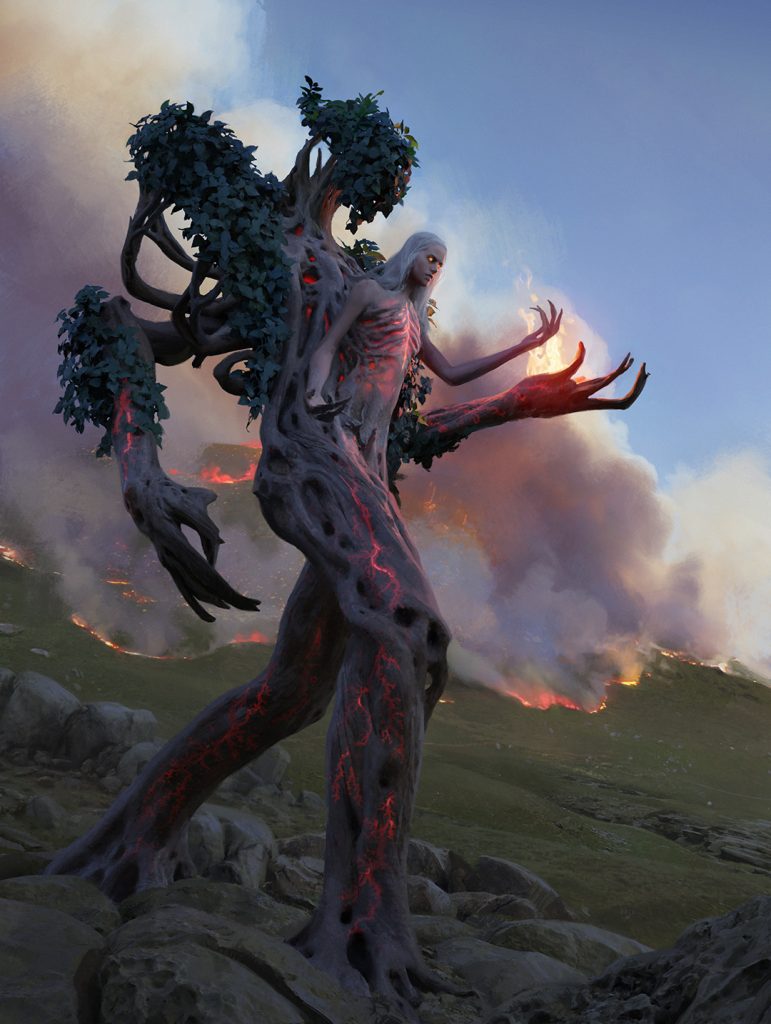
Wrenn and Six | Illustration by Chase Stone
Brawl can be considered similar to the Commander format. You pick a legendary creature or planeswalker card as a commander from Standard and build your deck around it. While building your deck, you’re limited to the color(s) of your chosen commander (this goes by something known as “color identity”, which includes any activated or triggered abilities on the card as well as its mana cost). Essentially, cards in your Brawl deck can only use mana symbols that also appear on your commander. Colorless cards can, of course, be used in any deck. You’re also limited to one copy of all cards except basic lands.
Each commander starts the game face-up in its controller's command zone, and it can be cast from here for its normal cost (plus an additional two mana for each time it's been cast from the command zone) as though it were in your hand. In addition, the list of banned cards in Standard doesn’t apply here.
Historic Artisan
“Artisan” is a format that includes only uncommon and common cards and is similar to Peasant/Pauper in paper Magic. With Historic Artisan, you have access to all the sets that have been released on MTGA, including ones that have rotated out of standard. There is also a special list of cards that have been ported over from paper MTG solely for Historic purposes.
Wrap Up

Time Sieve | Illustration by Franz Vohwinkel
As an MTGA user, you're probably interested in free stuff so be sure to check out our list of codes for MTGA that get you free packs and cards.
We also have a free MTGA tracker and draft assistant that tells you what to pick during booster draft and what cards your opponent has played during the match. You'll love it, trust us. And finally, be sure to check out Draftsim's namesake draft simulator to practice drafting before you battle with the bots on MTGA.
Follow Draftsim for awesome articles and set updates: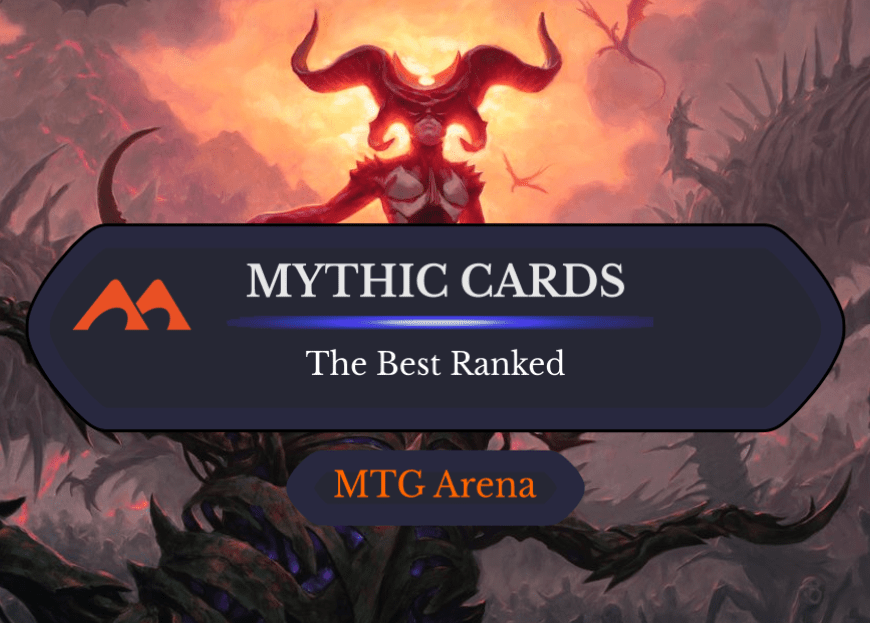
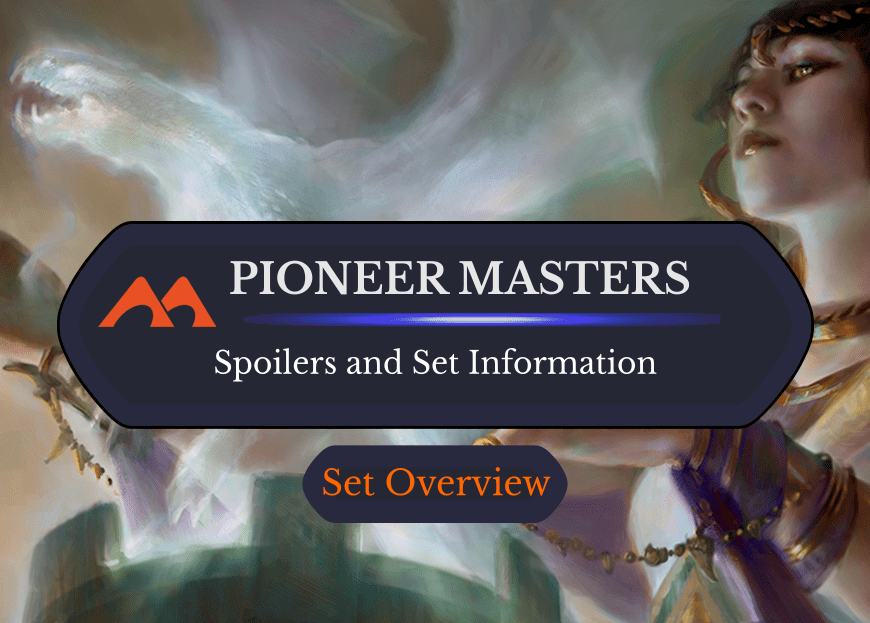
Add Comment